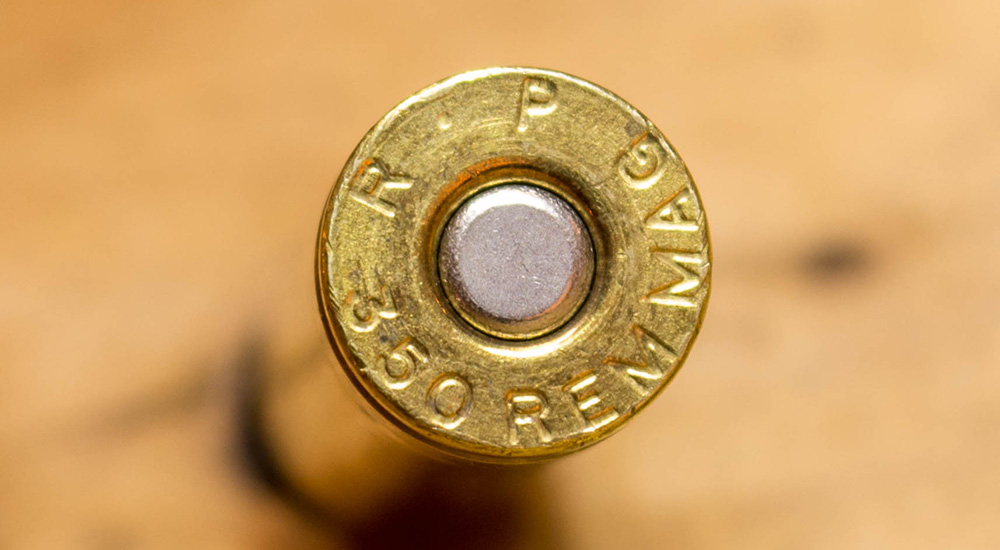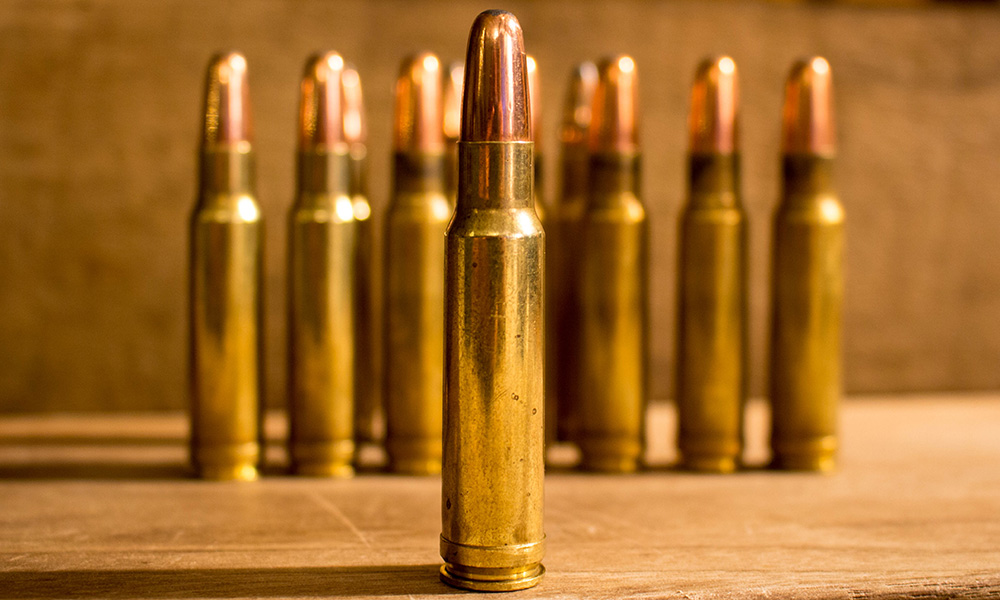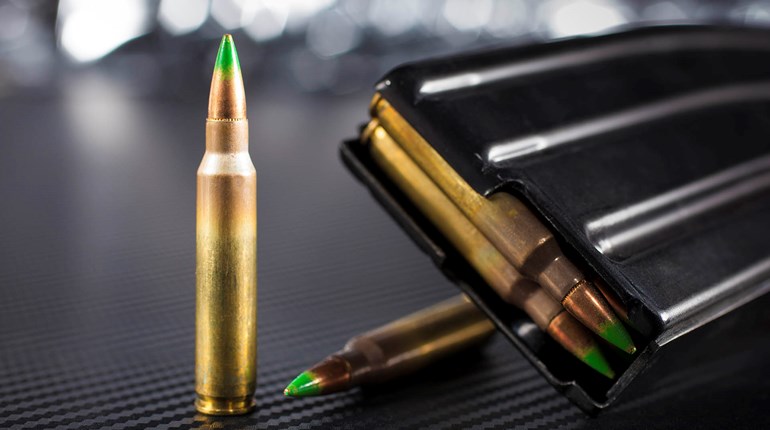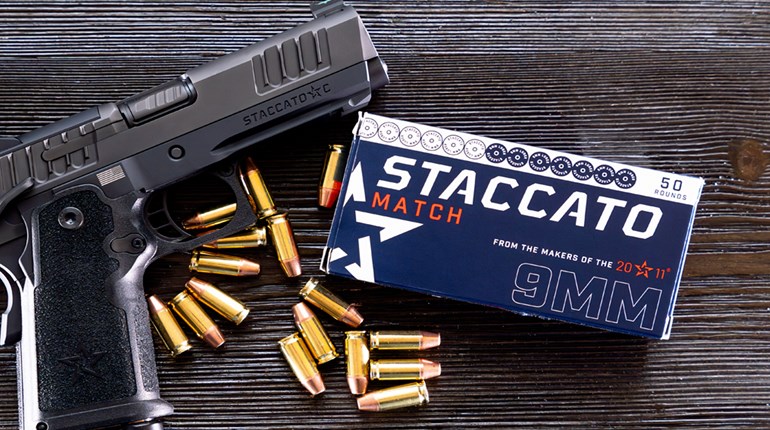
My phone buzzed—nothing truly rings anymore—and I saw it was my friend Dave calling; he was on a whitetail hunt in Maine, and I immediately hoped this would be good news. “Just put some blood on the three-fifty, good six-point buck. Just over 200 yards, and those loads worked just fine.” I couldn’t have been happier for him, especially after the number of weekend ranges sessions we’d spent fine-tuning the load for that rifle.

Dave deMoulpied is nine years my senior, but we’ve been buddies for over two decades, and his penchant for obscure cartridges rivals my own; I remember the day he found a used Remington 700 Classic chambered for the .350 Remington Magnum. “Used to drool over the Model 600, with the dog-leg bolt and shark fin sights on the vent rib, but this one’s a sweetheart,” Dave reported that day. That 700 was a looker, with clean lines and a stock that fit Dave perfectly. Finding ammo, now that would be a more difficult prospect, but we managed to score some, as well as some component brass and a good set of dies. Dave still puts that rifle to very good use.

Remington introduced its .350 Magnum in 1965, and it could be considered the original short magnum. Using the belted Holland & Holland case responsible for so many excellent designs from the 40s, 50s and 60s, but shortened to be wedged into a short-action magazine, the .350 Remington Magnum would mimic the performance of the .35 Whelen (which was still a wildcat at this point). With a case length of 2.170 inches, an overall cartridge length of 2.800 inches, yet retaining the 0.532 case head diameter and minimal body taper, the .350 Remington Magnum is highly reminiscent of a fire hydrant. Remington initially offered the 350 Magnum with two loads: a 200-grain Core-Lokt advertised at 2710 fps, and a 250-grain Core-Lokt at 2410 fps. In the 18½- and 20-inch barreled rifles, recoil was a serious problem, as was the muzzle blast; in addition, the shorter-barreled carbines never really reached the advertised muzzle velocities. Sadly, the .350 Remington Magnum, and its oldest son the 6.5 Remington Magnum, were both a flash in the pan; sales were never huge, and while there are some fervent devotees, Remington discontinued ammunition production for the .350 Magnum in the 1990s.
Today, the .350 Remington Magnum has all but faded into obscurity, with a couple of boutique ammo companies offering their products. Nosler still lists a 225-grain Partition load at 2250 fps, but even that is listed as currently unavailable. Component brass is still listed by both Remington and Nosler, but guess what: both currently unavailable. So if you like your .350 Remington Magnum and want to keep it active at the range and in the field, handloading is the only way to go. Providing you have the brass to work with, there are many great .358-inch-diameter component bullets to choose from, but you’re going to want to look to the shorter bullet choices.

In order to properly fit in the short-action magazines, that 2.800-inch COL really can’t be violated, and that can pose an issue with any of the .358-caliber bullets with longer ogives. Many of the lead-free copper bullets are quite long—as copper is less dense than lead, they will be longer for the same bullet weight—and can take up precious space inside the case, and therefore it might be a wise choice to employ the copper bullet of lighter weight if that’s the route you need to go; just be sure that the bullet can be seated with the ogive/shank junction at or outside of the case mouth. With a neck length of 0.630 inch, there is enough neck tension to keep your bullets where you seat them; I've never had to crimp any of my loads for the .350 Remington Magnum. A good large rifle magnum primer will spark your powder column, and powders in the burn rate range of Alliant’s Reloder 15 to IMR 4064 to Hodgdon’s H380 will work just fine.
In a rifle of common weight, the recoil of the .350 Remington Magnum is stiffer than that of the .308 Winchester or .30-06 Springfield, but isn’t so terrible that a competent rifleman can’t handle it. In the lighter rifles, I’d recommend getting off the bench as soon as your load development is finished.

With a 225-grain bullet, using the Nosler Partition as a good all-around choice, it isn’t hard to reach 2600 fps, giving over 3,300 ft.-lbs. at the muzzle. With a 200-yard zero, that bullet will strike 9.5 inches low at 300 yards, and 27.6 inches low at 400 yards, where it will still give 1,680 ft.-lbs. of energy. Should you want to use the .350 Remington Magnum for deer in the eastern woods—as Dave so often does—one of the good 180- or 200-grain bullets can be loaded to 2400 to 2500 fps for a lower-recoiling, yet still effective, deer and black bear load.
The future of the 350 Remington Magnum doesn’t really look good, insofar that I don’t think there will be many new rifles so chambered, and I doubt ammunition is going to make some sort of miraculous comeback, though one never knows. If you have a .350 Remington that you love, become a brass scrounger, and learn how to handload so you can keep it alive.
Looking for previous installments of our "Behind the Bullet" series? We've got you covered.
• 400 Legend
• .17 Winchester Super Magnum
• 350 Legend
• .303 British
• 26 Nosler
• 6mm Remington
• .270 Winchester Short Magnum
• 360 Buckhammer
• 30 Nosler
• 7-30 Waters
• .370 Sako Magnum
• .17 HMR
• 6.5 Weatherby RPM
• .327 Federal Magnum
• .450 Bushmaster
• 7mm PRC
• .275 Rigby
• .340 Weatherby Magnum
• .416 Ruger
• 27 Nosler
• .257 Roberts
• 7mm Weatherby Magnum
• .300 PRC
• .350 Rigby Magnum
• .450 Nitro Express
• .17 Hornet
• 7mm STW
• 6.8 Western
• .375 Ruger
• .223 Remington
• 6.5x55 Swedish
• .416 Remington Magnum
• .300 Winchester Short Magnum
• 28 Nosler
• 6.5 PRC
• .22 WMR
• .458 Winchester Magnum
• .22 Hornet
• .280 Ackley Improved
• .240 Weatherby Magnum
• .458 Lott
• .264 Winchester Magnum
• .348 Winchester
• 33 Nosler
• .260 Remington
• .30-30 Winchester
• .416 Rigby
• .358 Norma Magnum
• .22 LR
• 7mm-08 Remington
• 8mm Remington Magnum
• .338 Federal
• .224 Valkyrie
• .338-06 A-Square
• 9.3x62mm Mauser
• .257 Weatherby Magnum
• .45-70 Government
• .300 H&H Magnum
• .25-06 Remington
• .30-06 Springfield
• 6.5 Creedmoor
• .300 Remington Ultra Magnum
• 7mm Remington Magnum
• .470 Nitro Express
• .280 Remington
• .300 Winchester Magnum
• .270 Winchester
• .222 Remington
• .45 ACP
• .404 Jeffery
• .44 Remington Magnum
• .41 Remington Magnum
• .243 Winchester
• .338 Winchester Magnum
• .357 S&W Magnum
• 6.5-284 Norma
• 8x57 Mauser
• .38 Smith & Wesson Special
• 7x57mm Mauser
• 9mm Luger
• .35 Whelen
• .454 Casull
• .375 H&H Magnum
• .45 Colt
• .22-250 Remington
• 10mm Auto
• .308 Winchester



































